| Listing 1 - 10 of 19 | << page >> |
Sort by
|
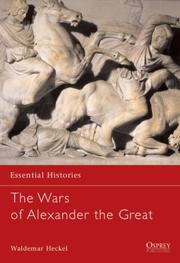
ISBN: 1841764736 Year: 2002 Publisher: Oxford : Osprey,
Abstract | Keywords | Export | Availability | Bookmark
 Loading...
Loading...Choose an application
- Reference Manager
- EndNote
- RefWorks (Direct export to RefWorks)
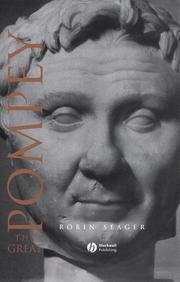
ISBN: 0631227210 0631227202 9780631227205 9780631227212 0470773421 047077522X 1281310379 9786611310370 Year: 2002 Publisher: Oxford : Blackwell,
Abstract | Keywords | Export | Availability | Bookmark
 Loading...
Loading...Choose an application
- Reference Manager
- EndNote
- RefWorks (Direct export to RefWorks)
Consuls, Roman --- Generals --- Consuls romains --- Généraux --- Biography. --- Biographies --- Pompey, --- Rome --- History --- Histoire --- Généraux --- Pompey the Great --- Consuls [Roman] --- Biography --- First Triumvirate, 60-53 B --- 53-44 B.C. --- Consuls, Roman - Biography. --- Generals - Rome - Biography. --- Generals - Rome - Biography --- Pompey, - the Great, - 106 BC-48 BC --- Rome - History - First Triumvirate, 60-53 BC --- Rome - History - 53-44 BC
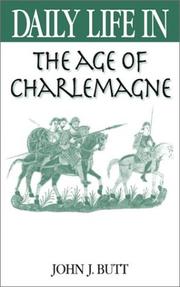
ISBN: 0313316686 Year: 2002 Publisher: Westport, Conn. : Greenwood Press,
Abstract | Keywords | Export | Availability | Bookmark
 Loading...
Loading...Choose an application
- Reference Manager
- EndNote
- RefWorks (Direct export to RefWorks)
Charlemagne, --- France --- Europe --- Social life and customs --- History --- Moeurs et coutumes --- Histoire --- 940.13 --- Geschiedenis van Europa:--481-843 --- Charlemagne Emperor --- -France --- -Social life and customs --- -History --- -940.13 --- 940.13 Geschiedenis van Europa:--481-843 --- -Charlemagne, --- Karol Wielki, --- Karl --- Carolus Magnus, --- Shārlmān, --- Charles the Great, --- Karl Velikiĭ, --- Carlo Magno, --- Carlos Magno, --- Karolus Magnus, --- Karl the Great, --- Carlomagno, --- Karl den store, --- شارلمان،
Book
ISBN: 3374019455 3374067212 Year: 2002 Publisher: Leipzig Evangelische Verlagsanstalt
Abstract | Keywords | Export | Availability | Bookmark
 Loading...
Loading...Choose an application
- Reference Manager
- EndNote
- RefWorks (Direct export to RefWorks)
Herod I the Great --- Jews --- 225-05 --- 225-05 Personen in het Nieuwe Testament. Apostelen --- Personen in het Nieuwe Testament. Apostelen --- Kings and rulers --- Herod --- Erode, --- Herod, --- Hérode, --- Herodes, --- Heródes, --- Hordos, --- Irod, --- הרוד --- הורדוס --- הורדוס,

ISBN: 0859916251 0585443602 9786610545384 184615006X 1280545380 9780859916257 9781846150067 Year: 2002 Publisher: Cambridge: Brewer,
Abstract | Keywords | Export | Availability | Bookmark
 Loading...
Loading...Choose an application
- Reference Manager
- EndNote
- RefWorks (Direct export to RefWorks)
St Helena, mother of Constantine the Great and legendary finder of the True Cross, was appropriated in the middle ages as a British saint. The rise and persistence of this legend harnessed Helena's imperial and sacred status to portray her as a romance heroine, source of national pride, and a legitimising link to imperial Rome. This study is the first to examine the origins, development, political exploitation and decline of this legend, tracing its momentum and adaptive power from Anglo-Saxon England to the twentieth century. Using Latin, English, and Welsh texts, as well as church dedications and visual arts, the author examines the positive effect of the British legend on the cult of St Helena and the reasons for its wide appeal and durability in both secular and religious contexts. Two previously unpublished 'vitae' of St Helena are included in the volume: a Middle English verse 'vita' from the 'South English Legendary', and a Latin prose 'vita' by the twelfth-century hagiographer, Jocelin of Furness. ANTONINA HARBUS is a Research Fellow in the Department of English, University of Sydney.
Holy Cross --- Legends --- Helena, --- Flavia Julia Helena, --- Helen, --- Елена, --- Elena, --- Holy Cross - Legends --- Helena imperatrix --- Anglo-Saxon England. --- British saint. --- Church dedications. --- Constantine the Great. --- Imperial Rome. --- Legends. --- National pride. --- Romance heroine. --- St Helena. --- True Cross. --- Welsh texts.
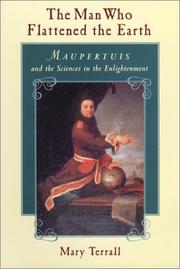
ISBN: 1282932942 9786612932946 0226793621 9780226793627 0226793605 9780226793603 9781282932944 6612932945 0226793605 9780226793603 0226793613 9780226793610 Year: 2002 Publisher: Chicago : University of Chicago Press,
Abstract | Keywords | Export | Availability | Bookmark
 Loading...
Loading...Choose an application
- Reference Manager
- EndNote
- RefWorks (Direct export to RefWorks)
Self-styled adventurer, literary wit, philosopher, and statesman of science, Pierre-Louis Moreau de Maupertuis (1698-1759) stood at the center of Enlightenment science and culture. Offering an elegant and accessible portrait of this remarkable man, Mary Terrall uses the story of Maupertuis's life, self-fashioning, and scientific works to explore what it meant to do science and to be a man of science in eighteenth-century Europe. Beginning his scientific career as a mathematician in Paris, Maupertuis entered the public eye with a much-discussed expedition to Lapland, which confirmed Newton's calculation that the earth was flattened at the poles. He also made significant, and often intentionally controversial, contributions to physics, life science, navigation, astronomy, and metaphysics. Called to Berlin by Frederick the Great, Maupertuis moved to Prussia to preside over the Academy of Sciences there. Equally at home in salons, cafés, scientific academies, and royal courts, Maupertuis used his social connections and his printed works to enhance a carefully constructed reputation as both a man of letters and a man of science. His social and institutional affiliations, in turn, affected how Maupertuis formulated his ideas, how he presented them to his contemporaries, and the reactions they provoked. Terrall not only illuminates the life and work of a colorful and important Enlightenment figure, but also uses his story to delve into many wider issues, including the development of scientific institutions, the impact of print culture on science, and the interactions of science and government. Smart and highly readable, Maupertuis will appeal to anyone interested in eighteenth-century science and culture. "Terrall's work is scholarship in the best sense. Her explanations of arcane 18th-century French physics, mathematics, astronomy, and biology are among the most lucid available in any language."-Virginia Dawson, American Historical Review Winner of the 2003 Pfizer Award from the History of Science Society
Scientists --- Maupertuis, --- maupertuis, science, enlightenment, self fashioning, expedition, exploration, lapland, newton, poles, metaphysics, astronomy, navigation, physics, academy of sciences, prussia, frederick the great, berlin, print culture, government, scientific institutions, mathematics, biology, paris, least action, teleology, cosmology, materialism, heredity, nonfiction.
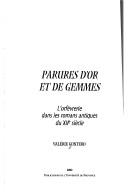
ISBN: 2853995194 9782853995191 Year: 2002 Publisher: Aix-en-Provence : Publications de l'Université de Provence,
Abstract | Keywords | Export | Availability | Bookmark
 Loading...
Loading...Choose an application
- Reference Manager
- EndNote
- RefWorks (Direct export to RefWorks)
Les romans antiques ("Le Roman de Thèbes", "le Roman d'Eneas", "le Roman de Troie" de Benoît de Sainte-Maure et "le Roman d'Alexandre" d'Alexandre de Paris) vulgarisent des récits latins pour le public du XIIe siècle. Cette "mise en roman" s'accompagne d'amplificationes d'or et de gemmes. Les ekphraseis qui jalonnent ces textes renouvellent la technique du portrait, mais aussi les descriptions de la ville, de la tente et du tombeau. Cette orfèvrerie véhicule un savoir encyclopédique, largement emprunté aux lapidaires et aux bestiaires contemporains, et participe à la translatio studii et imperii. Ces ornements fastueux proposent en filigrane un Art poétique "orfévré", qui dessine une rhétorique de la couleur par le truchement des couleurs de rhétorique. Le poète anonyme affirme progressivement son identité et revendique son art : il se peint in fine comme un orfèvre, artisan des mots.
Old French literature --- Thematology --- Medieval Latin literature --- anno 1100-1199 --- French literature --- Jewelry in literature --- Aeneas (Legendary character) --- Thebes (Greece) --- Troy (Extinct city) --- Classical influences --- Romances --- History and criticism. --- Alexander, --- Gold in literature. --- Jewelry in literature. --- Gold in literature --- History and criticism --- Legends --- French literature - Classical influences --- Aeneas (Legendary character) - Romances --- Thebes (Greece) - Romances --- Troy (Extinct city) - Legends --- French literature - To 1500 - History and criticism. --- Alexander, - the Great, - 356-323 B.C. - Romances --- Alexander, - the Great, - 356-323 B.C.
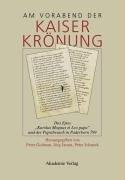
ISBN: 3050034971 3050056274 9783050034973 Year: 2002 Publisher: Berlin: Akademie,
Abstract | Keywords | Export | Availability | Bookmark
 Loading...
Loading...Choose an application
- Reference Manager
- EndNote
- RefWorks (Direct export to RefWorks)
Im Mittelpunkt des Buches steht das sogenannte Karlsepos, das früher auch als Aachener oder Paderborner Epos bezeichnet wurde. Aus verschiedenen Perspektiven erfolgt eine neue Auseinandersetzung mit dem Text, der in seiner literaturwissenschaftlichen Umgebung wie auch im zeitgenössischen politisch-geschichtlichen Kontext betrachtet und diskutiert wird. Dabei spielen die Ereignisse in Rom und Paderborn um das Jahr 800, aber auch die Einordnung in gesamteuropäische Zusammenhänge eine besondere Rolle, so dass der vorliegende Band als eine Bestandsaufnahme der politischen, gesellschaftlichen, wirtschaftlichen und kulturellen Verhältnisse des späten 8. und frühen 9. Jahrhunderts gelten darf.
Carolingians --- Carolingiens --- History --- Congresses --- Histoire --- Congrès --- Charlemagne, --- Leo --- Karolus Magnus et Leo Papa --- Europe --- Congrès --- Carlovingians --- Carolinians --- Karol Wielki, --- Karl --- Carolus Magnus, --- Shārlmān, --- Charles the Great, --- Karl Velikiĭ, --- Carlo Magno, --- Carlos Magno, --- Karolus Magnus, --- Karl the Great, --- Carlomagno, --- Karl den store, --- شارلمان، --- Léon --- León --- Carmen de Karolo Magno --- Carolus Magnus et Leo Papa --- Paderborner Epos --- Aachener Karlsepos --- De Karolo rege et Leone papa --- Carolingians - History - Congresses. --- Charlemagne --- Leo III p. --- Paderborn
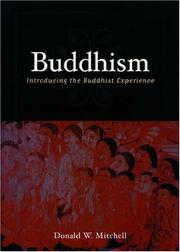
ISBN: 0195139518 0195139526 Year: 2002 Publisher: Oxford : Oxford university press,
Abstract | Keywords | Export | Availability | Bookmark
 Loading...
Loading...Choose an application
- Reference Manager
- EndNote
- RefWorks (Direct export to RefWorks)
294.3 --- Buddhism --- -Buddha and Buddhism --- Lamaism --- Ris-med (Lamaism) --- Religions --- Boeddhisme--(algemeen) --- History --- History. --- -Boeddhisme--(algemeen) --- 294.3 Boeddhisme--(algemeen) --- 294.3 Boeddhisme:--verder in te delen zoals 291.1/.8 --- Boeddhisme:--verder in te delen zoals 291.1/.8 --- Gautama Buddha --- Siddharta Gautama --- the Great Renunciation --- the teachings of the Buddha --- the Five Aggregates --- dependent arising --- Karma --- rebirth --- the Four Noble Truths --- the Eightfold Path --- Nirvana --- the Way of the Elders --- the Great Vehicle --- India --- Tibet --- China
Book
ISBN: 2717843809 9782717843804 Year: 2002 Publisher: Paris: Economica,
Abstract | Keywords | Export | Availability | Bookmark
 Loading...
Loading...Choose an application
- Reference Manager
- EndNote
- RefWorks (Direct export to RefWorks)
Generals --- Généraux --- Biography --- Biographies --- Alexander, --- Philip --- Greece --- Grèce --- History --- Kings and rulers --- Histoire --- Rois et souverains --- Psychology --- Influence --- Biography. --- Generals - Greece - Biography --- Alexander, - the Great, - 356 B.C.-323 B.C. - Psychology --- Philip - II, - King of Macedonia, - 382 B.C.-336 B.C. - Influence --- Greece - History - Macedonian expansion, 359-323 B.C. --- Greece - Kings and rulers - Biography --- Alexander, - the Great, - 356 B.C.-323 B.C. --- Philip - II, - King of Macedonia, - 382 B.C.-336 B.C.
| Listing 1 - 10 of 19 | << page >> |
Sort by
|

 Search
Search Feedback
Feedback About UniCat
About UniCat  Help
Help News
News